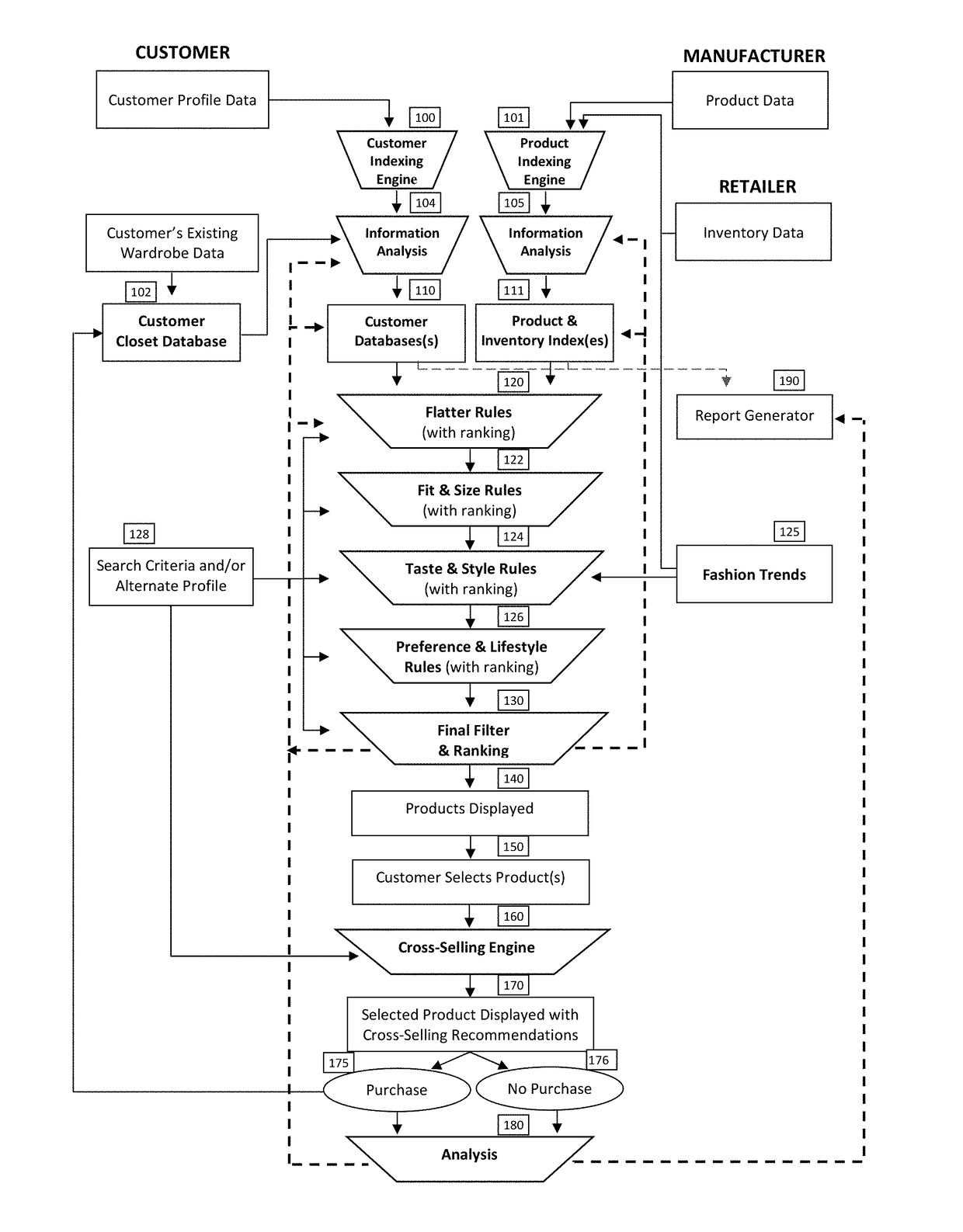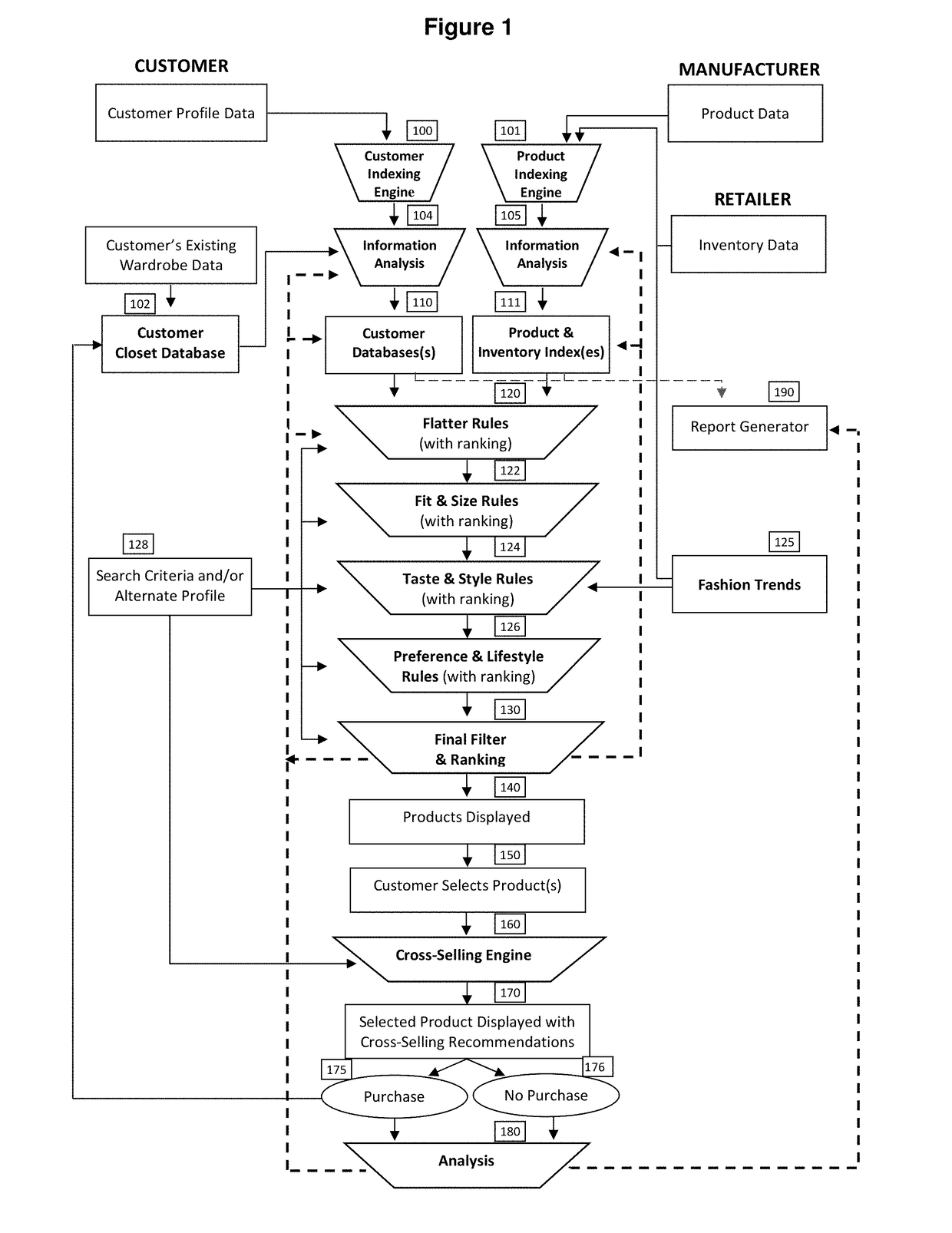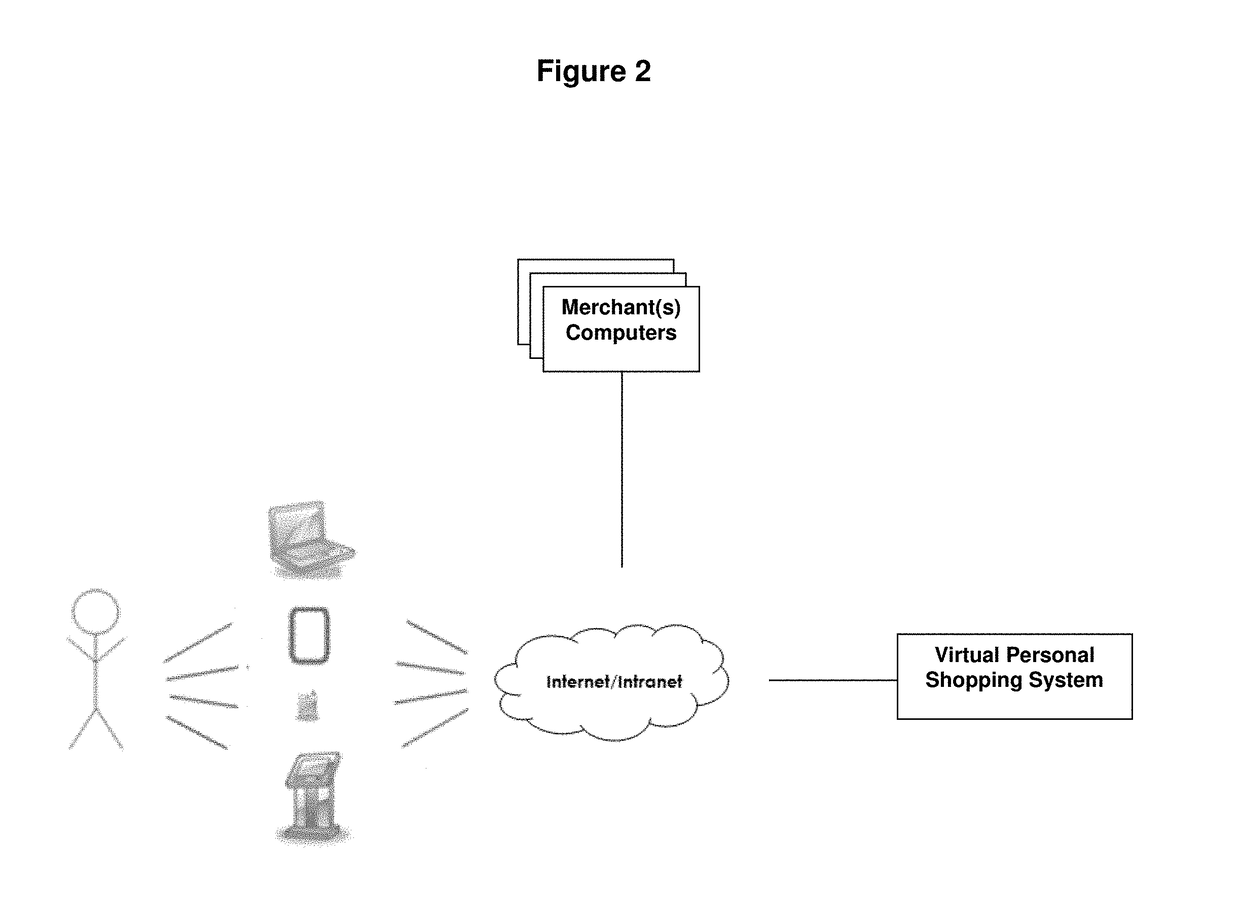Retailers lack sufficient information to know which products their customers want and lack adequate tools to recommend relevant products.
As a result, shoppers are faced with a vast number of mostly irrelevant products, and retailers are required to rely far too heavily upon customers working hard to find products, marking down between 30-50% of products, and losing a significant number of sales.
The primary cause for these low conversion rates is that the overwhelming majority of consumers have difficulty finding clothing that meets their specific needs.
While shoppers are only interested in products that meet these criteria, there is no efficient or accurate method—online or off—for identifying those few products.
In order to narrow their search, shoppers often rely upon surrogates such as brands or generalized product categories, but these filters still include a significant percentage of irrelevant products and omit many relevant ones.
It can be even more challenging to identify relevant products online as qualitative criteria such as flatter, fit and style are far more difficult to determine remotely, and while search technology does make it easier to identify products matching quantitative criteria such as price, fabric, color and size, it takes far more time to browse online than to visually scan the items in-store.
In addition, most retailers fail to provide sufficient, knowledgeable or effective salespeople.
Moreover, even the best salesperson or personal shopper can only provide educated guesses due to human limitations and the complex nature of making clothing recommendations.
While there are significant limitations to the services provided by salespeople, they are still the primary means available for guiding customers to relevant products, and online retailers attempt to replicate some of those benefits with product recommendation technology.
Flatter and fit are the most important characteristics in determining whether consumers will buy a garment, however these are the areas in which customers experience the greatest difficulty.
In fact, 85% of consumers buy a specific brand because of the way it fits his or her figure (flatter+fit), and the greatest concern for consumers about
purchasing apparel online is that ‘it will not look good on them or fit them’.
However, while these are the most important criteria for almost all consumers, the majority have trouble finding clothing that flatters or fits, and women consider ‘finding styles that look good on them’ to be the most challenging part of shopping for clothing.
The primary cause of these difficulties is that designers are required to select one
body shape when
mass-manufacturing clothing, but clothing designed for one
body shape will never fit or flatter other shapes.
As a result, most clothing only fits or looks good on a small percentage of consumers.
A secondary issue within fit is significant inconsistencies between, or even within, brands, which creates additional difficulties both online and off-line, and is a significant contributor to the
high rate of online apparel returns.
While the gap between consumers' needs and the products available is most noticeable with regards to flatter and fit, retailers and manufacturers have lacked the necessary tools to determine customers' preferences and needs in most areas.
Retailers have therefore been limited to analyzing past sales, however apparel has multiple qualitative features, and assumptions based upon past sales can be very misleading without understanding which features led to a purchase.
This has been attributed to our limited understanding of the brain's
neurophysiology and cognitive functions, as well as AI's difficulty dealing with Commonsense Knowledge.
Recommending personally relevant products is substantially more challenging than the problem solving typically done by expert systems because the logic and decision-making which experts apply to assess customers and products and make recommendations is far more complex, and much of it is made non-consciously and sub-symbolically.
Apparel recommendations are significantly more complex than other product categories because there are substantially more attributes to consider, as well as a far greater number of key criteria and types of variables.
In addition, while there are a great number of expert rules in the public domain which are used by stylists to recommend product and / or product combinations, a large percentage of the reasoning and decision-making is done non-consciously and sub-symbolically, and the rules governing those processes have not been compiled or even articulated.
Moreover, apparel recommendations are typically considered more of an art than a science—relying to a great extent on an expert's natural talent, sense of style and intuition—and have therefore been considered to be beyond the capability of existing methods and technologies.
Furthermore, even though many of the rules are well-known, they have proven to be too numerous and fragmented for companies to successfully develop accurate recommendation technology using existing methodologies.
There are no accurate and scalable solutions for recommending clothing that flatter, fit and / or match taste or lifestyle needs; and none considers all of the key
decision making factors.
In addition, there aren't any accurate or comprehensive cross-selling and targeted marketing solutions for apparel.
Finally, existing apparel recommendation technologies do not obtain and / or utilize an accurate and comprehensive understanding of the customer's attributes, needs and preferences, and there are no scalable solutions that develop an accurate and comprehensive understanding of the products' attributes.
 Login to View More
Login to View More  Login to View More
Login to View More 


